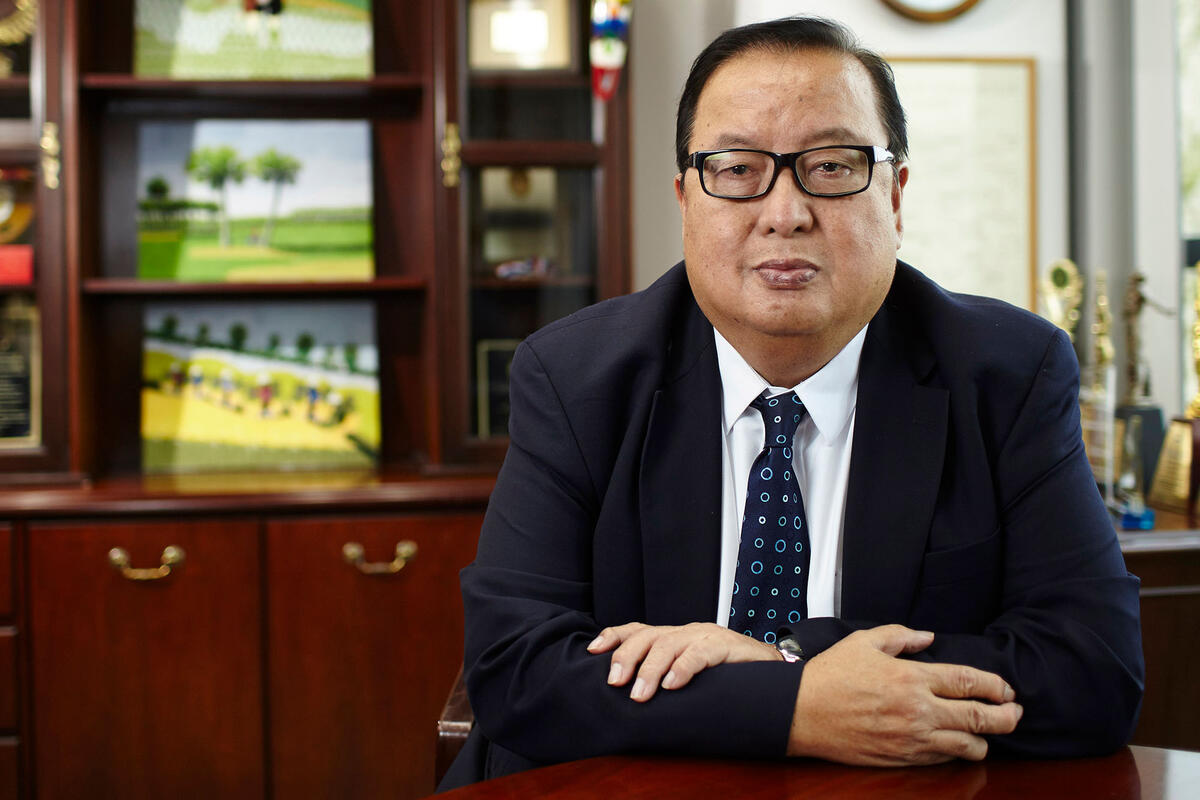UNLV is the latest stop in a journey that has taken this medical doctor around the globe in pursuit of improving public health and closing the gap in health disparities between the rich and poor.
Why UNLV?
UNLV has a diverse population and one of my goals was to mentor young minority students. Our profession isn’t very diverse. The faculty and student body in the School of Community Health Sciences is very diverse and I am excited to get to work with some of them.
Tell us a bit about your background.
After I finished medical school in the Philippines, I came to the United States and did my master of science in public health at Harvard. From there, I went to Johns Hopkins and got my doctoral degree with a focus on epidemiology and infectious disease.
I went to the University of South Carolina School of Public Health and was a professor there. I was planning to be there for a year before moving on to study tropical diseases, but a year became 15 years.
I did a sabbatical for one year at the Centers for Disease Control (CDC), but I stayed at CDC for four years doing HIV/AIDS program evaluation and then from there I got a job at National Institutes of Health (NIH), where I worked for 12 years in the National Center of Minority Health and Health Disparities, which later became an institute.
What motivates you?
To help bridge the gap between developing counties and the developed world — to collaborate and help train students who can go back and help serve their native countries. I feel like I’m in the right place at the right time to do what I want to do.
What about UNLV strikes you as different from other places you have worked or where you went to school?
The lack of a diverse biomedical research workforce is one of the major problems facing our country today. The great diversity of its student body and its designation as a minority-serving institution make UNLV an ideal environment for me to mentor diverse future professionals in public health.
What are you research areas of interest?
Well, at NIH my role was more of an administrator, so one of the things that I did was to develop the community-based participatory research program. We instituted a three-phase approach for community-based participatory research: Planning, intervention, and dissemination. Another thing we’ve done is work with the LGBT community. There’s still a lack of research with that community.
Finally, I have an interest in Asian-American health. NIH has funded centers of Asian-American health at NYU (New York University). We could apply for one here, as we have lots of minority populations in Las Vegas. Asian-Americans are the second-fastest growing population among minorities in U.S.
What’s the biggest misconception about your field?
One misconception in public health is that everything is under control because you don’t see a problem — the water is fine, the air is fine. Thinks are OK. But public health is not just dealing with crises. It’s about making sure you prepare people. Public health lets you prepare for the unknown.
Tell us about a time in your life when you have been daring?
When I was in South Carolina in the early years of the AIDS epidemic, I responded as an academician by organizing the first international conference on AIDS education in 1987 without federal or state funding. It led to the formation of the International Society for AIDS Education that year and my election as its first president. In 1988, I conceived and developed AIDS Education and Prevention - An Interdisciplinary Journal. I have served as its editor for 29 years.
What inspired you to get into this field?
Seeing first-hand the disparities in health in the Philippines. I grew up there seeing the disparities between the poor and the rich and that gap was so wide. The poor suffer from infectious diseases because of their life conditions. That’s what we call “social determinants of health.” Poverty itself causes a lot of health problems. People who are more affluent are spared these diseases. Seeing the gap as a kid, I wanted to work to narrow that gap and help these vulnerable populations.
If you could fix one thing in the world, what would it be?
I think education. If you could help make it accessible and help people finish their education… it would make a huge difference. My father’s advice was to get an education, as he didn’t receive any education in his life. Once you have an education, you can survive anywhere. If we could provide education to everybody, that would be a key to success and a better life.
Do you have hobbies or pastimes?
One of my favorite things is to travel. Recently, I got to spend Christmas in Bethlehem, which was always a dream of mine. I stayed in a monastery for much of that time. Whenever I travel, I also try to reach out ahead of time to local universities to see if I can do a talk or collaborate or do something along those lines.
Tell us about an object in your office that has special meaning for you.
Well, when I travel I collect turtles from all over the world and I keep them in my office. They symbolize longevity. They’re crafted out of different materials, like wood or ceramic, and they really are from all over the place: Oman, Saipan, Abu Dhabi, the Philippines, Taiwan. I have a set I got in Long Beach (California) that I like to call “The Beatles” because there are four of them in the set.



